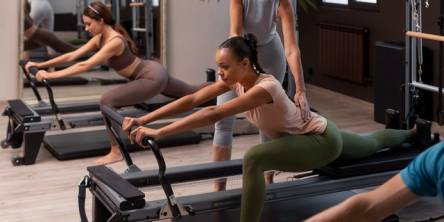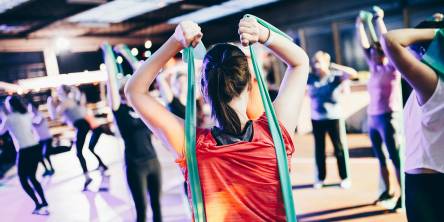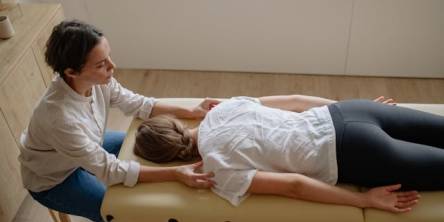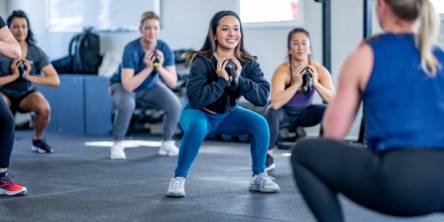Shin Splints Survival Guide: What You’re Doing Wrong and How to Bounce Back
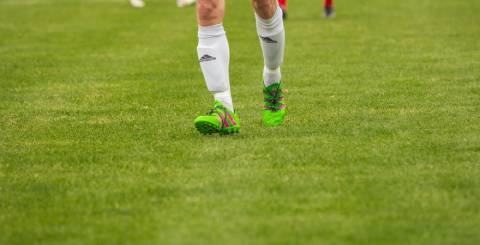
Shin splints can feel like a full stop in your fitness goals, especially when they won’t go away. The ache, the swelling, and the stabbing pain along the shin bone can be frustrating. Even worse, most people delay real healing by repeating the same recovery mistakes. Using crazy compression socks or sleeves without understanding proper care can hold you back.
This guide is for anyone tired of guessing what works. From smart exercises to supportive shoes and compression sleeves that give targeted support, we’re breaking it down in the easiest, most practical way to help you heal.
What You’re Doing Wrong and How to Bounce Back
Shin splints, medically known as medial tibial stress syndrome, are one of the most common fitness-related injuries, especially in runners, dancers, and military recruits. They usually cause a dull ache in the lower leg along the front or inside of the shin bone. Most people don’t realize that the pain doesn’t immediately come from the bone. It starts with inflammation of the muscles, tendons, and soft tissue where they attach to the bone. If left untreated, the injury can lead to stress fractures—tiny cracks in the bone tissue that take several weeks to heal.
Many believe compression alone will treat shin splints. While compression sleeves offer injury relief, ignoring rest or pushing through your exercise routine without proper recovery worsens things. Shin splints develop due to repeated stress on the lower leg muscles, especially on hard surfaces or flat feet without arch supports. Without correcting your habits, compression won’t fix it—it just masks the discomfort.
How Shin Splints Happen in the First Place
Shin splints usually occur from doing too much too soon. That includes sudden increases in mileage, training on flat surfaces, or not using supportive shoes. The pain often starts as a mild ache after a workout but grows stronger with continued physical activity. Shin splints feel like a burning, stretching, or stabbing pain in the shin bone.
According to research published in the American Journal of Sports Medicine, over 30% of athletes experience shin splints at some point. Ignoring early signs often leads to longer downtime or more serious injury like stress fractures in one leg or both.
Compression That Works—But Only When Done Right
Leg compression works best when combined with smart recovery habits. Compression sleeves apply gentle pressure around the lower leg, which helps reduce swelling, improve blood flow, and ease inflammation. They give targeted support to the muscles and tendons involved.
Crazy compression gear for performance often comes with a firm but flexible fit. A proper sleeve should never feel tight enough to limit movement or cause discomfort. It should feel like a snug second skin offering injury relief. Compression can speed up improved recovery and help you confidently return to movement when paired with rest, stretching, and ice.
Common Mistakes in Treating Shin Splints
Many people make recovery harder than it should be. Here are a few common errors:
- Skipping rest and continuing the same workout
- Ignoring pain and swelling and pushing through the discomfort
- Wearing old or worn-out running shoes
- Using compression alone without adjusting the training
These mistakes often lead to chronic lower leg pain or conditions that may need a healthcare provider to treat later.
The Role of Stretching and Strengthening
Proper shin splint stretches target the muscles along the shin and calf. Strengthening exercises for your lower leg and foot muscles help create stability and reduce pressure on the shin bone. Simple measures like toe curls, heel walks, and calf raises make a big difference when done consistently.
A physical therapist can guide you through safe exercises that support healing without adding more repetitive activity. This is especially helpful if you’ve had shin splints diagnosed more than once.
Smart Training Plans That Prevent Shin Splints
You don’t need to stop training—you just need to be smart about it. Here are a few ways to prevent shin splints from coming back:
- Use cross-training methods like biking or swimming
- Stick to low-impact exercises when recovering
- Avoid sudden changes in workout intensity
- Train on grass or soft tracks instead of hard surfaces
- Switch out running shoes every 300–500 miles
Choosing the Right Compression Sleeves
Not all sleeves are created equal. Look for products labeled for shin splint treatment with clear sizing guides. A good sleeve should offer targeted support for the lower leg muscles and help reduce swelling during rest or light physical activity.
Ensure your compression gear includes moisture-wicking fabric, breathability, and stretch zones. These elements help maintain comfort during use and support pain-free movement.
When It’s More Than Shin Splints
If you still feel pain after rest and home care, it may be something more serious. Stress fractures or deep bone tissue injuries often mimic shin splints but require longer healing. A physical exam, bone scan, or magnetic resonance imaging can help your healthcare provider confirm the cause.
Look for signs like swelling on only one leg, sharp stabbing pain, or discomfort that doesn’t disappear after a few weeks. These can point to deeper issues that need professional treatment.
Home Recovery That Actually Works
A mix of rest, ice, compression, and stretching works best. Here’s what you can do at home:
Your Home Recovery Toolkit
- Cold packs or ice packs: 15–20 minutes daily for pain and swelling
- Compression sleeves: Wear during the day for lower leg support
- Supportive shoes: Avoid walking barefoot or in flat sandals
- Pain relievers: Use nonsteroidal anti-inflammatory drugs as needed (after doctor’s advice)
- Orthotic inserts: Use arch supports if you have flat feet
- Stretching and low-impact moves: Keep blood moving without added stress
Shin Splints vs. Stress Fracture – How to Tell the Difference
|
Feature |
Shin Splints |
Stress Fracture |
|
Type of pain |
Dull ache in the lower leg |
Sharp or stabbing pain at a specific spot |
|
Onset |
Builds gradually with exercise |
Sudden during activity |
|
Affected area |
Along the length of the shin bone |
Pinpointed pain in one spot |
|
Visible swelling |
Mild swelling possible |
Often present, may be more severe |
|
Diagnosis |
Based on symptoms and physical exam |
May need a bone scan or an MRI |
|
Treatment |
Rest, compression sleeves, stretches |
Long rest, medical care |
Final Words
Shin splints don’t have to keep you down. You can heal faster and return stronger with rest, compression, smart training, and stretches. Crazy compression and simple care techniques, when used right, make all the difference. Listen to your body, and recovery won’t take forever.
FAQs
1. How long do shin splints take to heal with proper care?
Most people recover within 2 to 4 weeks using compression, stretching, and rest. Severe cases involving stress fractures may take longer and need medical treatment.
2. Can flat feet cause shin splints more often?
Yes, flat feet can lead to poor arch support and increased strain on the lower leg muscles, making shin splints more likely. Using arch supports or orthotic inserts can help reduce the risk.
Similar Articles
Living with chronic back or neck pain can make everyday tasks difficult. Whether it’s from long hours sitting at work, a past injury, or conditions such as herniated discs and sciatica, constant pain affects quality of life.
High blood pressure, also known as hypertension, is a silent health issue that affects millions worldwide. While medications are often prescribed, many natural practices can significantly help regulate blood pressure and protect heart health
Stepping into a Pilates studio for the first time can feel both exciting and overwhelming. With various equipment, different class styles, and a focus on controlled movements, it’s important to know how to make the most of your experience. This blog will share practical ways to enhance your pilates studios experience.
Fabric resistance bands have gained popularity as versatile fitness tools, but their potential extends far beyond the gym. Made from durable, stretchy fabric, these bands are designed to provide resistance during exercise, helping to strengthen muscles and improve flexibility.
Making big lifestyle changes can feel overwhelming, but small daily movements can have a significant impact on your overall well-being. You don’t need intense workouts or drastic adjustments. Simple, mindful movements throughout the day can boost your energy, improve your posture, and reduce stiffness.
Boost your health and happiness with daily exercise. Improve heart health, reduce stress, and stay fit with simple, effective workout tips. Start today!
Learn how to choose the best commercial treadmills to boost durability, performance, and client satisfaction for your fitness facility's success.
Selecting the best workout clothes for your workout routine to enhance your comfort level, performance and style while doing exercise. For your better workout experience, choose the workout clothes and the well chosen clothes can improve mobility, wick away sweat and help to regulate body temperature
Boost your gym confidence with the right wardrobe. Discover why gym track pants and essential apparel are key to comfort, style, and peak performance.



